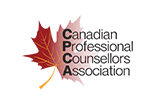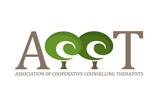
Research has suggested that members of the public hold significantly more negative views towards those dealing with addiction issues compared to other forms of mental illness (Barry, McGinty, Pescosolido, & Goldman, 2014). People are less willing to have a person with a substance use disorder marry into their family or work closely with them, more willing to accept discriminatory practices against that person, and are more likely to oppose policies aimed at helping them.
This goes to show that while our understanding of the mechanisms of addiction have advanced over time, public attitudes have unfortunately lagged. Individuals with addictions confront negative stereotypes and attitudes on a daily basis, and over time, these attitudes can become internalized, leading to a sense of shame and self-loathing. This is what’s known as self-stigma.
Self-stigma can affect not only those with substance use disorders, but also individuals with addictions to sex, the internet, or gambling (Pescosolido & Martin, 2015). Fortunately, addictions counsellors can develop a good understanding of what stigma is and how it can be reduced.
Understanding Stigma and the Harms it Can Cause
Stigma generally manifests in three levels: structural stigma, social stigma, and self-stigma (Barnes, 2017). Structural stigma refers to the policies drafted and enacted by entities like governments, companies, and schools that restrict the rights or opportunities of the stigmatized individuals. Social stigma refers to negative stereotypes, assumptions, and attitudes about a group that are spread throughout society. Self-stigma is what results when an individual has internalized the social and structural stigma they face, which can lead to shame and self-loathing (Matthews, Dwyer, & Snoek, 2017).
Stigma can make individuals with addiction issues less likely to seek out help, and more likely to drop out of treatment once they do. Not only that, but it can also increase their sense of isolation and alienation, actually pushing them deeper into their addiction (Livingston, Milne, Fang & Amari, 2012).

Stigma can stop individuals with addictions from seeking or staying with treatment
Graduates of Addictions Counsellor Training Can Use Language to Reduce Stigma
The language we use to describe substance use disorders and other addictions can sometimes unintentionally perpetuate negative stereotypes and attitudes, so one way that addictions counsellors can reduce stigma after completing their addictions counsellor courses is to be mindful of the language they use when counselling their clients, or when speaking to others about addictions (Substance Abuse and Mental Health Services Administration, 2017).
One of the ways addictions counsellors can do this is by adopting the use of “person first” language. Person first language prioritizes the person rather than disease. By saying “a person with a substance use disorder,” for example, an addictions counsellor suggests that a person is affected by a problem which can be treated. This can be contrasted with a term like “drug abuser,” which might suggest that the person is the problem, rather than the one having the problem.

Using person first language can help reduce stigma
Addictions counsellors can also make clear that a person with an addiction is struggling with a disorder of a medical nature. This is in contrast to the unfortunately common depiction or conception of addiction as a moral failing for which the afflicted individual deserves blame. In order to address this misconception, addictions counsellors can avoid terms like “habit” or “abuse,” in favour of terms like “disorder” and “misuse” or “hazardous use.”
Addictions Counsellors Can Also Combat Stigma by Educating the Public
Addictions counsellors can also use their addictions counsellor training to educate friends, family members, and the public about addictions, in order to help reduce social stigma. Educational interventions have been shown to be effective in reducing the public’s negative perceptions, stereotypes, and attitudes relating to individuals with addictions (Barnes, 2017). Adopting person first language when discussing issues relating to addiction, correcting misconceptions when you encounter them, and sharing positive stories of individuals who have successfully recovered from their addictions can also be positive strategies in reducing stigma.
Are you interested in helping others overcome addiction?
Contact Rhodes College to learn more about our diploma in Addiction Counselling.
Works Cited
Barnes, S.J. (2017). The Three Faces of Stigma. Visions, 13(1). Retrieved from: http://www.heretohelp.bc.ca/visions/recovery-stigma-and-inclusion-vol13
Barry, C. L., McGinty, E. E., Pescosolido, B. A., & Goldman, H. H. (2014). Stigma, discrimination, treatment effectiveness, and policy: public views about drug addiction and mental illness. Psychiatric Services, 65(10), 1269-1272. Retrieved from: https://ps.psychiatryonline.org/doi/pdf/10.1176/appi.ps.201400140
Livingston, J. D., Milne, T., Fang, M. L., & Amari, E. (2012). The effectiveness of interventions for reducing stigma related to substance use disorders: a systematic review. Addiction (Abingdon, England), 107(1), 39-50. Retrieved from: https://www.ncbi.nlm.nih.gov/pmc/articles/PMC3272222/
Matthews, S., Dwyer, R., & Snoek, A. (2017). Stigma and Self-Stigma in Addiction. Journal of bioethical inquiry, 14(2), 275-286. Retrieved from: https://www.ncbi.nlm.nih.gov/pmc/articles/PMC5527047/
Pescosolido, B. A., & Martin, J. K. (2015). The Stigma Complex. Annual review of sociology, 41, 87-116. Retrieved from: https://www.ncbi.nlm.nih.gov/pmc/articles/PMC5527047/
Substance Abuse and Mental Health Services Administration. (2017, November) Words Matter: How Language Choice Can Reduce Stigma. Retrieved from: https://www.samhsa.gov/capt/sites/default/files/resources/sud-stigma-tool.pdf









